All You Need to Know About Permanent Makeup in 2023
Read all about permanent makeup: facts, treatments, pain level, cost, risks, plus FAQs answered!
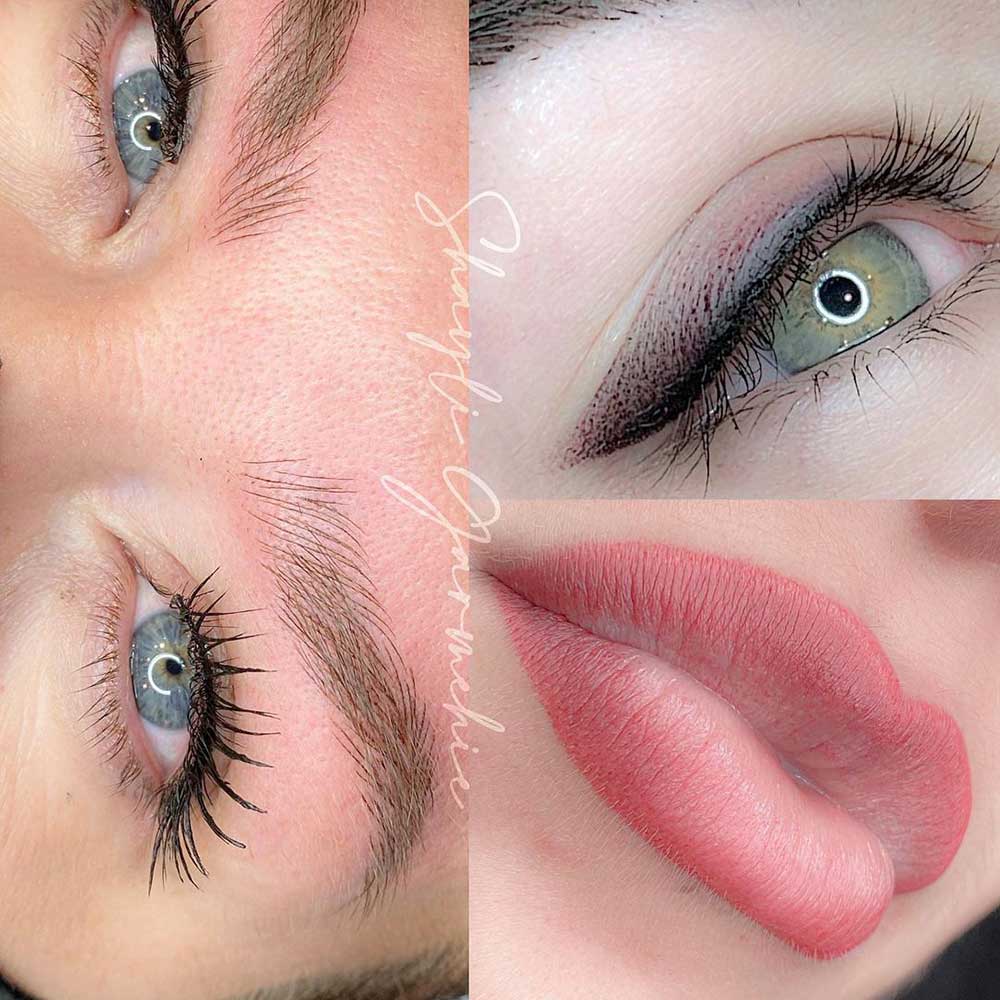
Image source : PMUhub
Explore more permanent makeup topics:
Permanent makeup, or cosmetic tattooing, is a range of advanced facial tattooing procedures developed to give people fuller brows, plumper lips, eyeliner that never smudges, or similar cosmetic effects.
Closely related to restorative micropigmentation, permanent makeup is supposed to recreate the look of wearing regular makeup, but with effects that last for a couple of years.
Here’s the ultimate guide through permanent makeup!
What Is Permanent Makeup?
Permanent makeup is similar to a tattoo, but the modern version uses much more sophisticated tools, machines and pigments formulated especially for facial tattooing.
Even though it’s called permanent makeup, the results are not forever. They stay visible for 1.5 to about 5 years, depending on the treatment, gradually fading.
So they need to be refreshed from time to time.
The main purpose of permanent makeup is to beautify, giving you an enhancement as subtle or as dramatic as you want. It’s supposed to replace aspects of your makeup.
For instance, if you choose a permanent makeup tattoo for lips, you will have the perfect color on your lips 24/7 without worrying that it will wear off or smudge.
Permanent makeup eyeliner doesn’t come off after you wash your face, and neither do the results of permanent makeup for eyebrows.
Benefits of Permanent Makeup
Imagine waking up with your makeup already done and shortening your morning routine.
With permanent makeup, you can just wash your face in the morning and everything is still there. Permanent makeup eyebrows are always on point, your eyeliner on fleek and lips perfect.
Permanent makeup can do anything you want your regular makeup to do: enhance your best features, make your eyes look bigger or your lips seem fuller, and give you a glammed-up look every day of the week, at the beach or the pool.
However, permanent makeup is more than that.
It is beneficial for people who suffer from certain skin conditions, such as alopecia. People with little to no brows due to this and other conditions and with treatments such as microblading, they get a set of perfectly shaped eyebrows.
Learn more about microblading for alopecia management here.
Related micropigmentation treatments can also help beyond this. Cosmetic tattooing is great for scar camouflage, to disguise vitiligo, and is used to restore the breast areola with patients who had undergone mastectomy.
How Is Permanent Makeup Done?
Permanent makeup artists use machines or manual tools specially designed for the treatment they practice. For example, microblading is done with a manual blade that consists of tiny needles that deposit pigment under the skin. Other treatments use pens or state-of-the-art machines for tattooing.
Is Permanent Makeup Painful?
Clients claim that getting a permanent makeup treatment is not painful, but can be a little bit uncomfortable, depending on the tattooed area. PMU artists usually use numbing solutions to reduce the pain. The client is informed of what steps to take to prepare for the treatment and given the post-care tips, which are very important in order for the tattoo to heal properly.
Is Permanent Makeup Safe?
Since permanent makeup is a cosmetic tattoo, small incisions are made on the skin. Therefore, a new tattoo is an open wound and it is prone to infections if not treated properly. In order to avoid complications, it is vital to follow aftercare tips, and some of the most important rules say that wearing makeup during the healing stage is absolutely forbidden.
When it comes to side effects of permanent makeup, allergic reactions are rare and can be easily avoided if you do a patch test prior to the treatment. You are obliged to inform your permanent makeup artist about any skin conditions and health problems you have, in order to avoid complications during and after the treatment.
In order to lower and actually avoid any chances of getting an infection and other problems, it is important to find a reputable, experienced and above all, certified permanent makeup artist to provide the treatment.
Who Should Avoid Permanent Makeup?
Permanent makeup is generally considered to be safe, but some people should avoid it, otherwise, it can lead to serious complications. Permanent makeup treatments are not allowed for people younger than 18, pregnant or breast-feeding women, as well as those who have any of the conditions from the following list:
- People with any bleeding disorders
- People who take blood-thinning medications
- People with viral infections or diseases
- People who are going through chemotherapy
- People with diabetes should get a doctor’s approval
- People with skin irritations or Psoriasis near the treated area
- People who have undergone an organ transplant
- People who’ve recently had Botox injections or fillers in the area (at least 2 weeks should pass before you get your brows microbladed)
What Permanent Makeup Treatments Are Available?
The most popular permanent makeup procedures are definitely eyebrow tattoos, but lip blush has been the fastest growing trend in PMU in the past couple of years.
Permanent eyeliner is another staple.
But there are also some more controversial treatments that aren’t for everyone.
Permanent freckles
Microblading
Microblading treatment uses a manual tool that consists of tiny needles which deposit pigment and create realistic hair strokes. Eyebrows look natural, fuller, and more defined. For detailed information about microblading cosmetic tattoo, effects, healing, aftercare, and more, read our ultimate Microblading Guide.
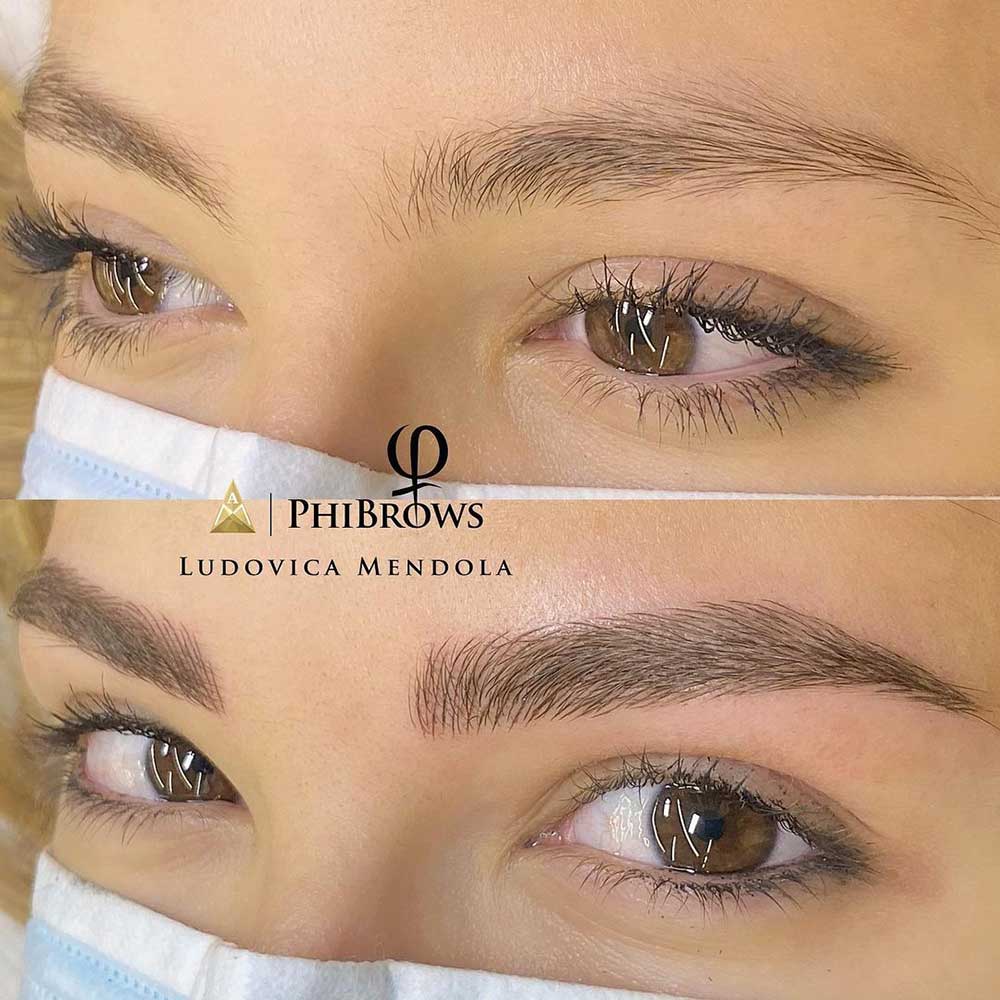
Powder Brows
Powder brows tattoo is popular among people who like fuller brows, with a soft, makeup effect. Shading is added to create the powdery effect, so there are no separate hair strokes as with microblading. Find out everything about ombre powder brows in our Powder Brows Guide.
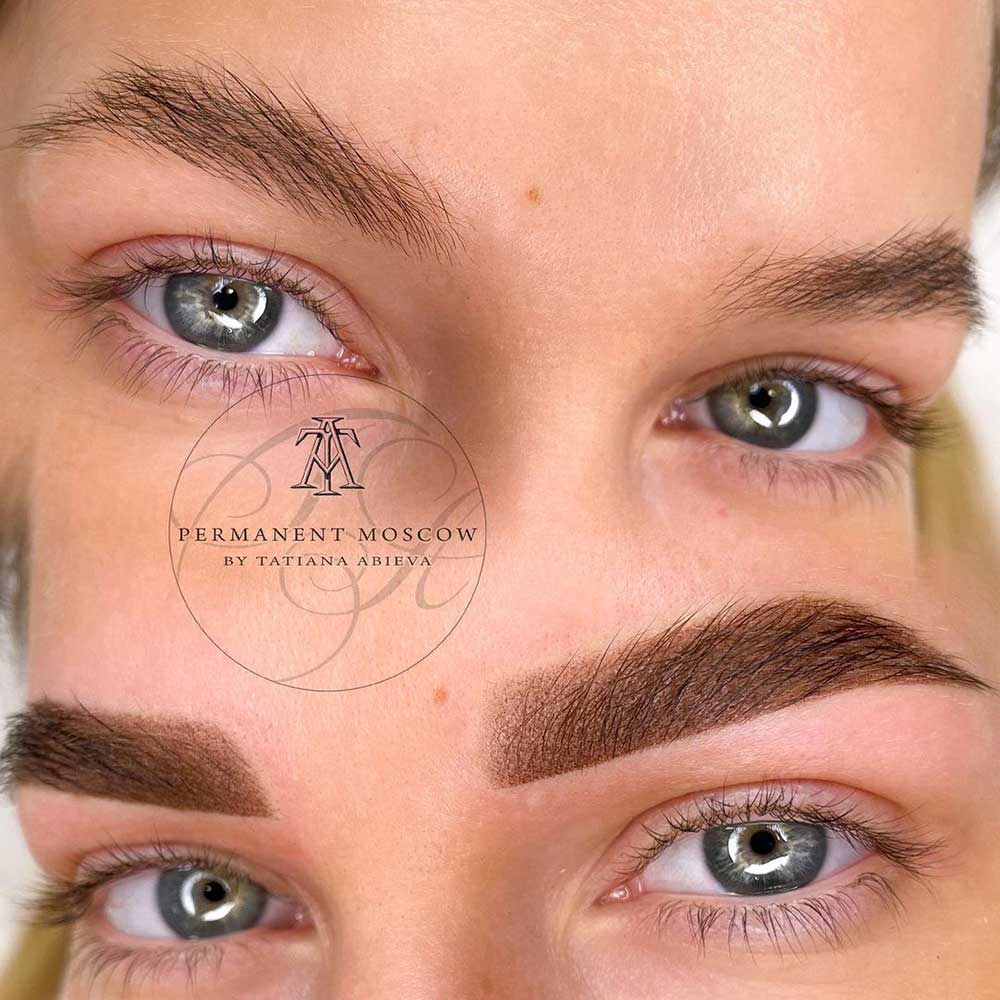
Microshading
This treatment uses a manual or electric tool with needles that make tiny, pin-like dots in a gradient pattern, creating a powdered effect. It is commonly added after microblading when a client asks for brows with makeup effect. Read all about this treatment in our Microshading Guide.
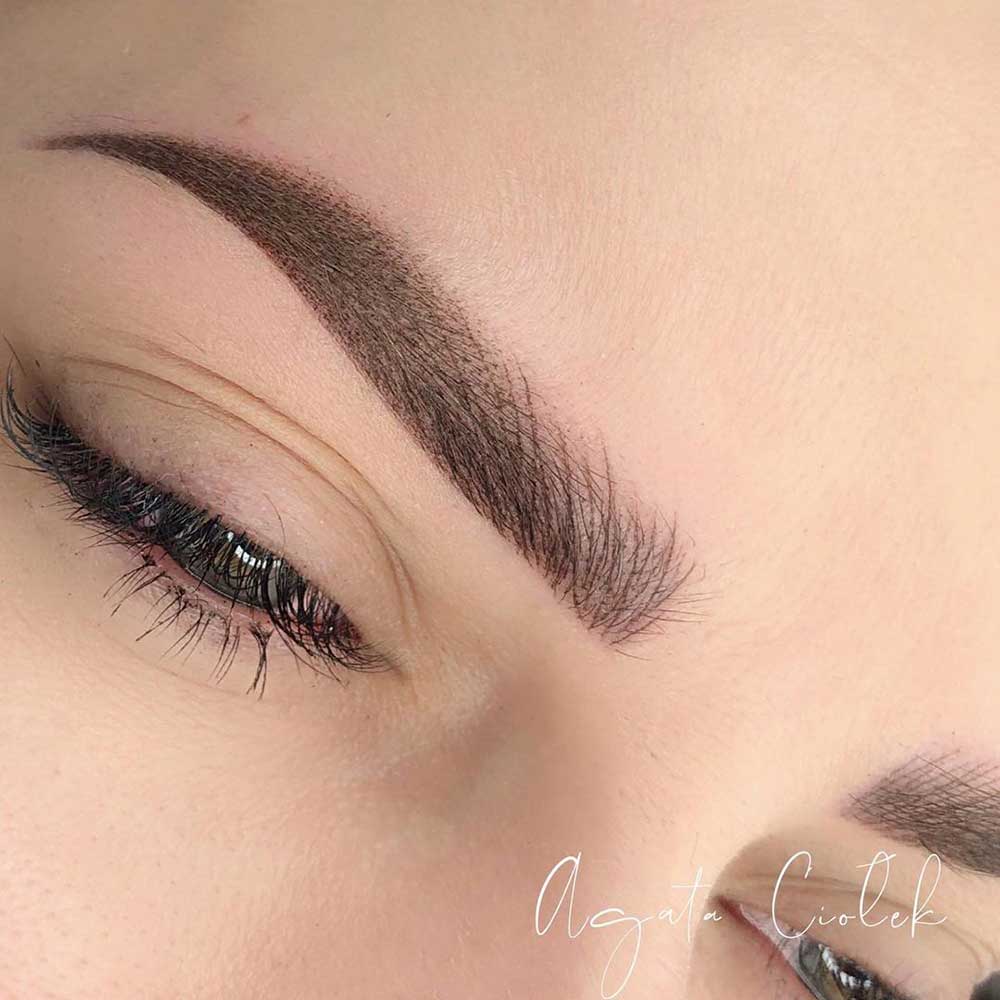
Nano Brows
Nano eyebrows look almost completely the same as microbladed, however, they are done differently. Nanoblading is often referred to as machine brows because an electric machine is used instead of a manual blade. Our Nano Brows Guide will give you all the information about this cosmetic tattoo.
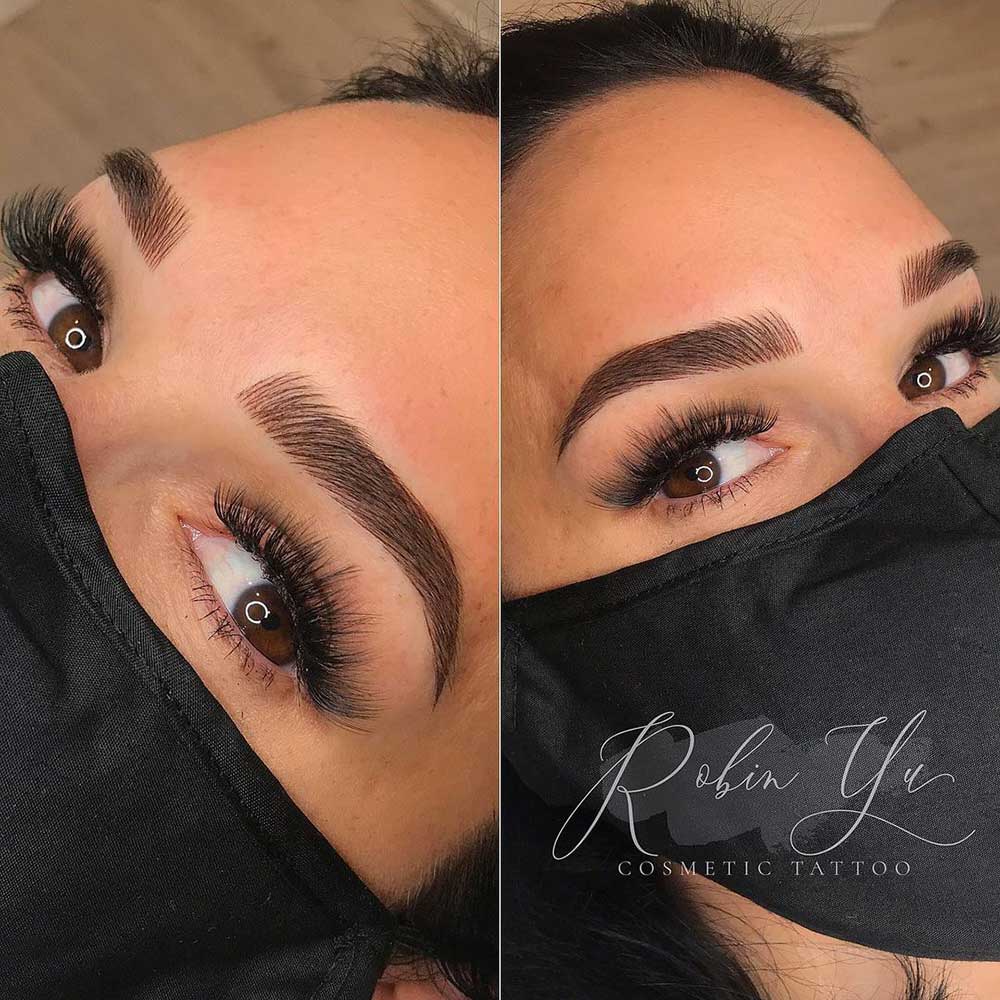
Permanent Eyeliner
For those who like wearing eyeliner every day, an eyeliner tattoo is a great, time-saving option. It lasts up to three years, during which you will have eyeliner on fleek at all times. You can choose different styles – from subtle lash line enhancement to a more dramatic, bolder version. Read all about the treatment, healing, aftercare, and cost in the Permanent Eyeliner Guide.
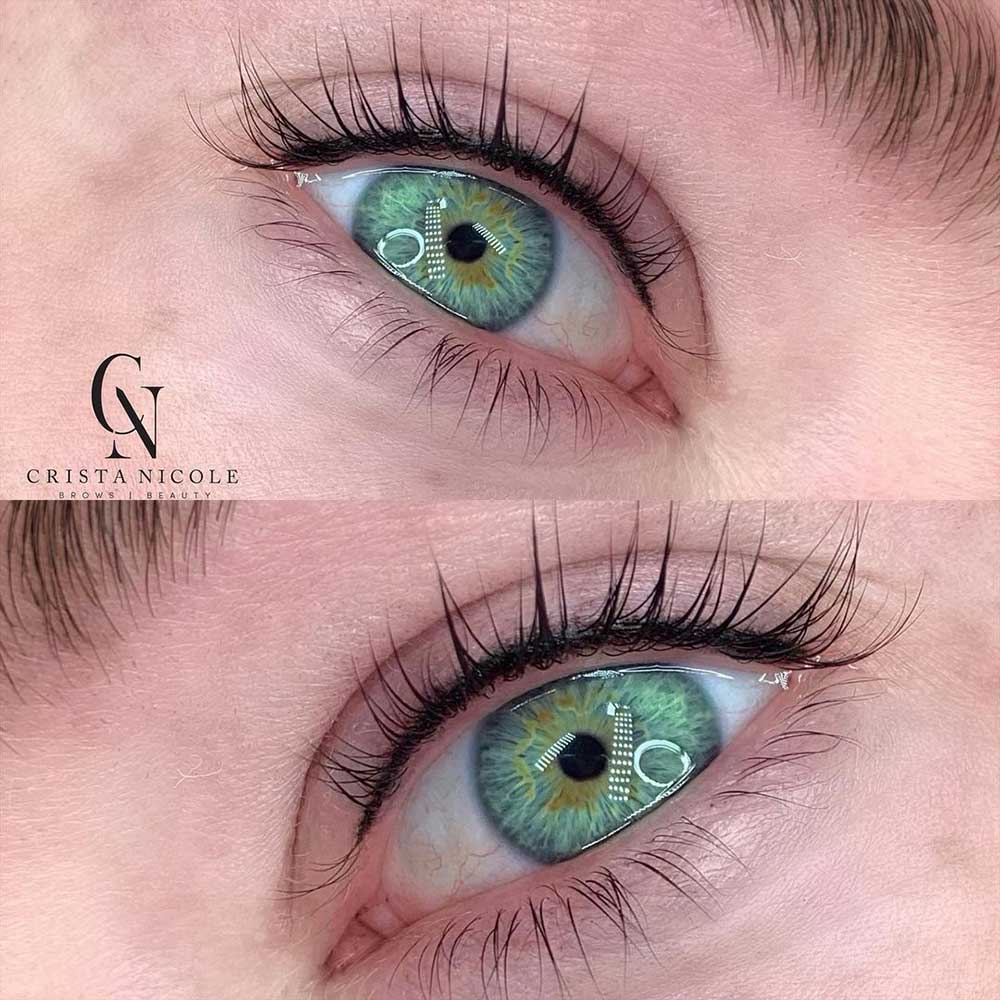
Permanent Lips
Lip tattoo or lip blush is a semi-permanent treatment that enhances the color and volume of your lips, making them look fuller. This treatment is also great for covering up scars and improving the shape of the lips. Read all about it in our Permanent Lips Guide.
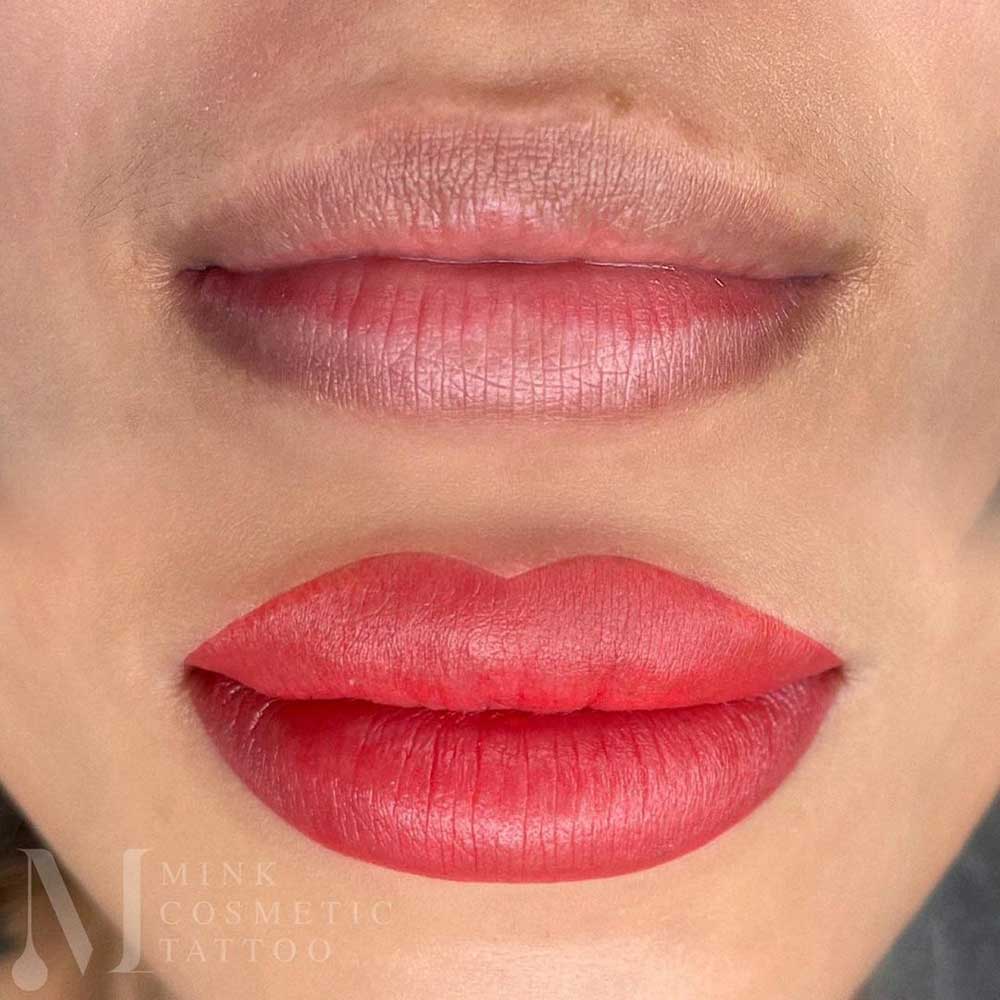
Feather Brows
Eyebrow Feathering is a treatment for those who already have good brows, but want to fill the sparse spots and add some extra hair trokes to get bushy, natural-looking, and trendy eyebrows. Read more about microfeathering in our Feather Eyebrows Guide.
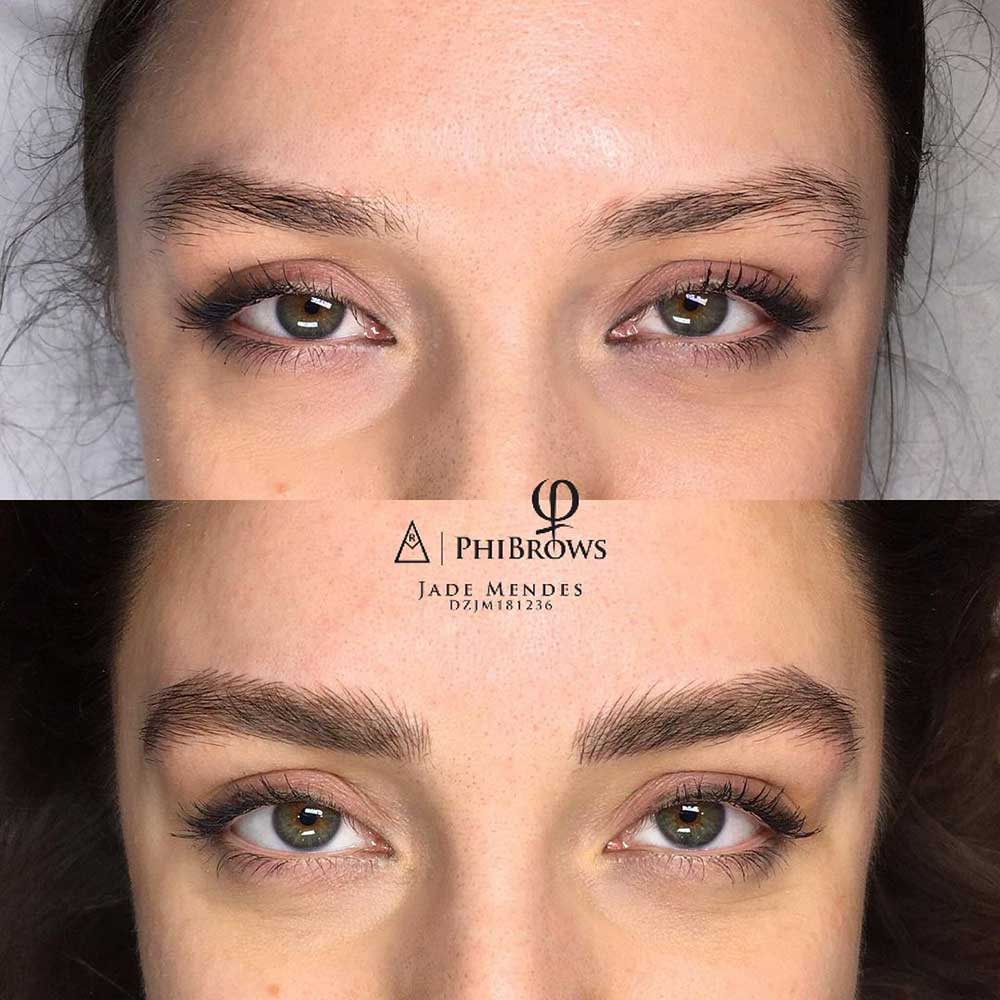
Permanent Concealer
This treatment enables covering up dark circles under your eyes. However, there are debates about whether it should be done or not. Read more in the Permanent Concealer Guide.
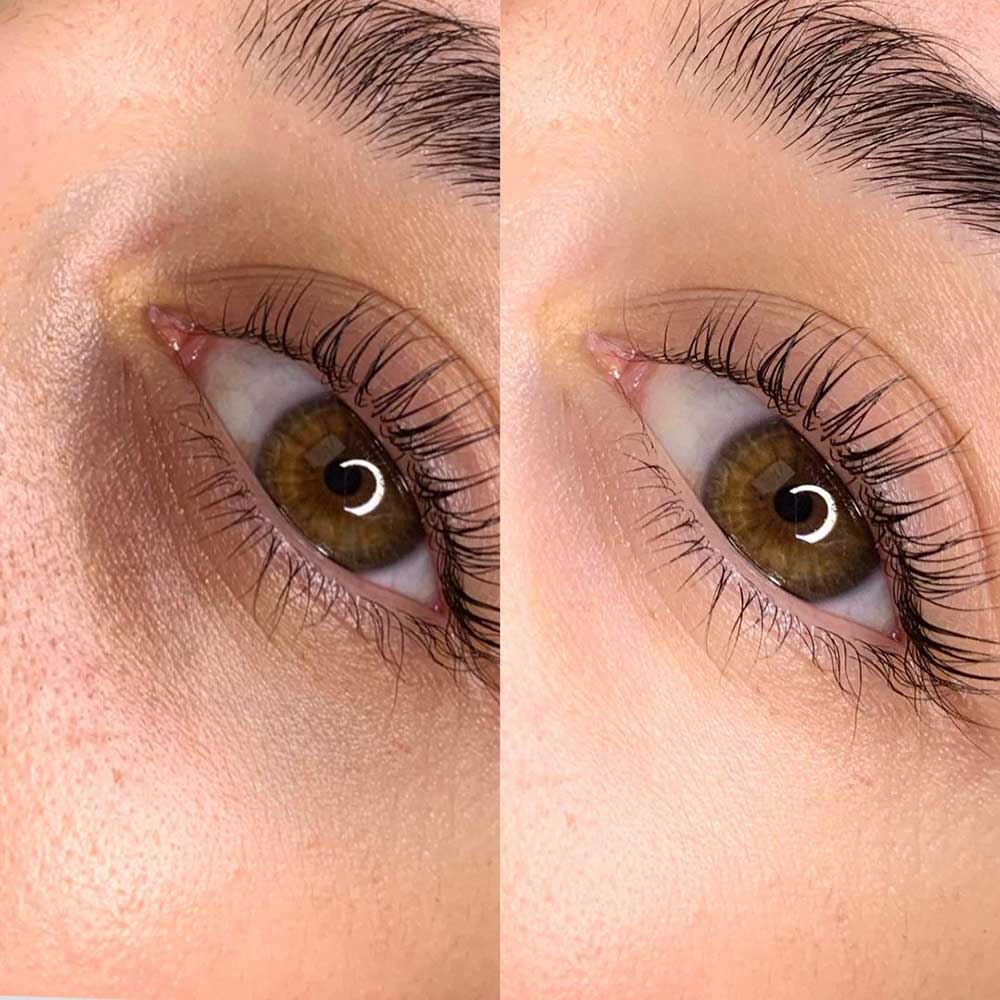
How Long Does Permanent Makeup Last?
They are supposed to be visible from 2 to about 5 years, depending on the procedure.
The immune system breaks down the pigments, and the skin constantly renews itself, so PMU results gradually fade. They can be refreshed whenever a color boost is needed, but ideally, if they’re left alone, they should become invisible.
However, pigment particles can never completely, 100% disappear from the skin, this is the permanent aspect of PMU.
What Is the Lifespan of Different PMU Treatments?
All the treatments are semi-permanent, which means that the color will start fading after some time. This is actually one of the advantages of the modern cosmetic tattoo because the pigments don’t change color, they just fade. Also, if the trend changes or you get tired of your old tattoo, you just let it fade, without scheduling a color boost appointment.
Permanent makeup for eyebrows lasts 1-2 years, depending on the treatment and skin type. Eyeliner lasts up to 3 years, while permanent makeup lipstick lasts 3 to 5 years. With scalp micropigmentation, you are set for up to 10 years.
Other popular treatments that don’t involve tattooing, such as lash lift, henna brows and brow lamination last for 4-6 weeks.
How Much Does Permanent Makeup Cost?
They are supposed to be visible from 2 to about 5 years, depending on the procedure.
The immune system breaks down the pigments, and the skin constantly renews itself, so PMU results gradually fade. They can be refreshed whenever a color boost is needed, but ideally, if they’re left alone, they should become invisible.
However, pigment particles can never completely, 100% disappear from the skin, this is the permanent aspect of PMU.
Can Permanent Makeup Be Removed?
Being semi-permanent, these treatments are easier to remove than the traditional tattoo. There are a couple of removal options – topical, non-laser, and laser solutions, as well as the salt-saline technique and dermabrasion.
In order to avoid having to remove your cosmetic tattoo, be careful when you choose your PMU artist. To find out more about the removal options for each PMU treatment, read our Permanent Makeup Removal Guide.
Where Can I Get Permanent Makeup?
Choosing a permanent makeup artist is not something you should take for granted. The best option is to get a good recommendation, but if that is not possible, google “permanent makeup salons near me” and check out all the online reviews.
Pay attention to before and after photos and if possible, visit the place before you book a treatment, to check the conditions and meet the artist. Some of them offer free consultation, which is great because clients like to get to meet someone before trusting them with tattooing their face.
Is Permanent Makeup a Good Career?
Permanent makeup is one of the most lucrative branches of the beauty industry. The treatments are very popular and in great demand at the moment and as it constantly improves, they are definitely going to be in the years to come.
Even though it does not require years of education, but only a course, permanent makeup can’t be learned overnight. To become a good permanent makeup artist, you need to dedicate your time to practicing, working hard, constantly learning, and improving. Like in every other business, it is hard at the beginning, but once you become a professional, you’ll be enjoying this rewarding career.
Is Microblading Safe?
Microblading is generally considered a non-invasive treatment, and is safe for most people.
That said, it does involve the breaking of the surface of the skin, and thus carries certain risks, mainly the possibility of an allergic reaction to pigments, and skin infections.
Infections are not that common, but they can happen if the tools used are not sterile, or the pigments get contaminated on their way into the skin. They can also develop in the days after the procedure, while the skin hasn’t healed.
If you choose a certified artist who works with sterile equipment, and you follow the microblading aftercare instructions they give you, there is nothing to worry about!
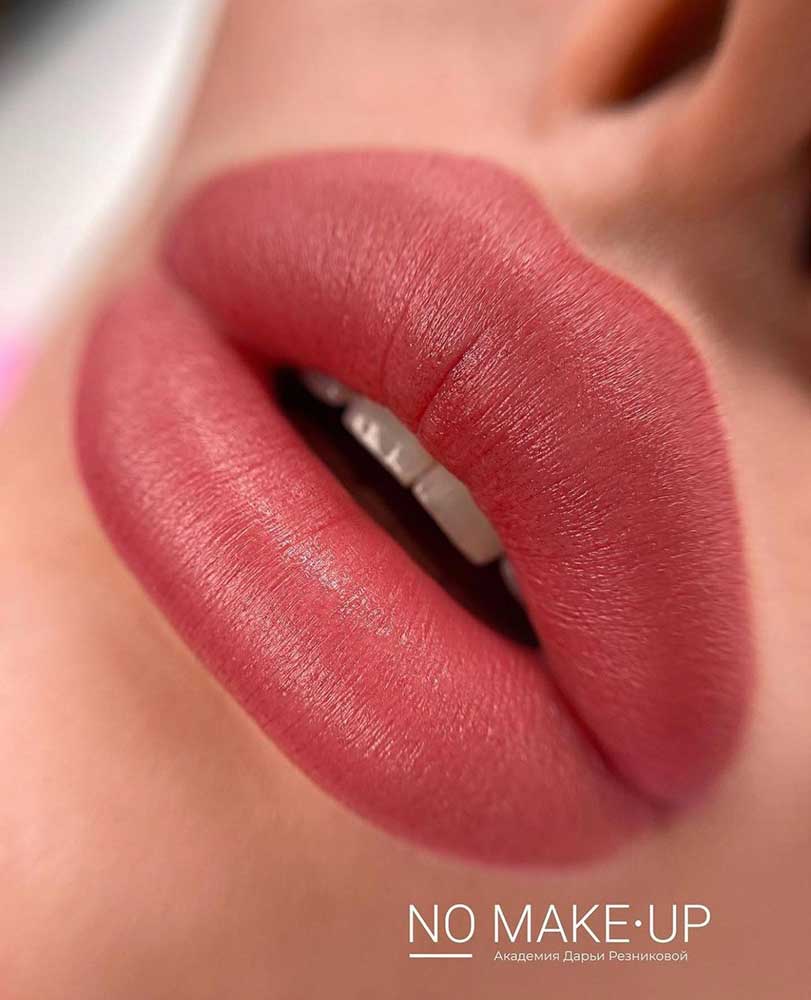
PERMANENT MAKEUP – MAIN TAKEAWAYS
Permanent makeup is getting more and more popular because these small, non-invasive changes can do a lot – improve your look, cover your imperfections and make you feel better about yourself.
weekly insight into PMU insdustry
Subscribe to our FREE newsletter. 100% good stuff.

support us so we can keep providing you with free education , information and inspiration.
